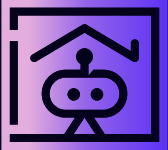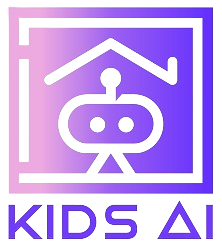 In this edition of the KidsAI Interview Series, we’re thrilled to feature Matthew Wemyss, a distinguished voice in educational technology on LinkedIn and an innovative leader in the educational field. With over a decade of driving educational innovation in the UK and internationally, Matthew has been instrumental in integrating AI and other emerging technologies into classrooms, creating dynamic, future-ready learning environments. As the Assistant School Director and Strategy and Development Lead at the Cambridge School of Bucharest, his visionary approach to education is shaping the way students engage with the digital world, making learning more interactive, customized, and effective. Join us as we delve into Matthew’s insights on the future of education, the transformative power of technology in teaching, and how to equip students with the skills they need for tomorrow.
In this edition of the KidsAI Interview Series, we’re thrilled to feature Matthew Wemyss, a distinguished voice in educational technology on LinkedIn and an innovative leader in the educational field. With over a decade of driving educational innovation in the UK and internationally, Matthew has been instrumental in integrating AI and other emerging technologies into classrooms, creating dynamic, future-ready learning environments. As the Assistant School Director and Strategy and Development Lead at the Cambridge School of Bucharest, his visionary approach to education is shaping the way students engage with the digital world, making learning more interactive, customized, and effective. Join us as we delve into Matthew’s insights on the future of education, the transformative power of technology in teaching, and how to equip students with the skills they need for tomorrow.
Matthew, with your extensive experience in education and technology, how do you envision the future classroom where AI and emerging technologies are seamlessly integrated?
Honestly, the future classroom that gets me excited is one that feels both incredibly different and deeply familiar. Technology becomes this invisible force that unlocks potential, not the star of the show.
Picture this: students don’t just learn history; they step into it through VR simulations, debating with historical figures brought to life by AI. Science experiments aren’t limited to the textbook; wearables collect real-time data on a field trip, and personalised AI tutors offer guidance as they analyse results. Projects become powerful, spilling beyond the school walls, with students designing solutions for real community challenges and experts mentoring them virtually.
But what matters most isn’t just the tech. It’s the human connection those AI-powered moments make possible. Teachers have more time to be true mentors, guiding discussions, sparking curiosity. Students collaborate, they create, and they develop a deep understanding of how their ideas can make a difference in the world. That’s the kind of future worth creating!
We totally agree. The human element remains crucial. In your role, you’ve implemented innovative approaches to teaching and learning. Could you share a standout project or initiative where technology truly transformed the educational experience?
One of the most exciting initiatives we’ve launched centres around an AI-powered chatbot designed specifically to help students become independent programmers. We call it “Adabot”, and it has revolutionised how students learn debugging skills.
See, Adabot doesn’t just provide the answers when students get stuck in their code. Instead, it offers tailored hints, asks thought-provoking questions, and guides them towards identifying problem areas. This approach has had a remarkable impact on our programming classes. Students who might have hesitated to ask for help are now actively working through challenges on their own. They’re developing a problem-solving mindset – a crucial skill for coders and beyond! Witnessing their ability to successfully debug their code builds incredible confidence. They start to view themselves as capable programmers, not just beginners. Adabot frees me up to focus on more complex concepts or provide targeted support where it’s truly needed. This creates a more dynamic, personalised learning experience for everyone.
It’s not about replacing teachers but providing tools that empower students and allow us to be better mentors. We’re helping them become self-reliant problem-solvers, which is an essential skill for the future.
That’s a fantastic use of AI to empower students! Adapting to rapid technological advancements can be challenging. How do you ensure that both teachers and students are prepared to navigate and thrive in a tech-enhanced learning environment?
It’s less about knowing every tool and more about a mindset shift. We demystify AI with hands-on workshops – even if it’s just teachers asking a bot to write a poem about their subject. Once that initial lightbulb moment happens, they see the potential. We’ve started to embed digital literacy across our curriculum. It’s about teaching students how AI works, how to evaluate sources, and importantly, how to harness these tools creatively and ethically, not just how to use them.
For teachers, peer support is key. We have an EdTech committee where experimentation is rewarded. We trial tools, share successes and failures, and together we develop a digital strategy that comes from the classroom, not just from the top down.
Engagement and interactivity are key in modern education. How do you leverage AI and adaptive learning platforms to create customised and interactive learning experiences?
Engagement and interactivity are at the heart of how I approach education. That’s why I’m incredibly passionate about the potential of AI and adaptive learning platforms for creating learning experiences that are both customised and deeply immersive.
For instance, we’re using tools like ThingLink with the Blockade Labs extension to shatter the traditional classroom boundaries. Students don’t just read about historical events; they step into them through VR worlds I design. They might explore an Anglo-Saxon village or walk through the industrial revolution, completing quizzes directly within the virtual environment. These multi-sensory experiences ignite their imaginations and make learning truly memorable.
To me, this is just the start of an incredible journey. AI opens up worlds of possibility for customising lessons and making them incredibly engaging. The key lies in using these tools as springboards for active learning, not passive consumption. I’m wholeheartedly committed to staying ahead of the curve on this – I want to give our students the most empowering and stimulating educational experiences possible!
The development of future-ready skills is crucial. In what ways do you integrate creativity, communication, and problem-solving into the curriculum through technology?
I firmly believe the most important skills we can give our students aren’t about memorising facts or mastering a specific tool. It’s about fostering the adaptability, creativity, and problem-solving mindset they’ll need to thrive in an ever-changing world. Technology is a phenomenal catalyst for developing these essential skills.
Let’s be clear – we’re not teaching technology for its own sake. We want students to use AI image generators as a starting point for their original art, not just churn out random pictures. We teach coding as a way to break down complex problems, working through challenges step-by-step and collaborating in pairs to develop creative solutions. Every subject – history, science, languages – becomes an opportunity to use technology as a powerful tool for exploration, creation, and communication.
Given the diversity in student learning needs, how do you use technology to ensure inclusivity and cater to all learners effectively?
Diversity in the classroom is a strength, not a challenge. Technology, when used thoughtfully, becomes a powerful tool for ensuring inclusivity and catering to all learners effectively.
I’ve begun experimenting with plugging my existing lesson plans into AI tools for personalised feedback. I can ask for “stretch and challenge” questions to spark deeper thinking in advanced learners or request tailored modifications to accommodate specific learning needs identified in student IEPs. This way, I can ensure the learning experience is inclusive and pitched for every student’s needs.
We’ve found that students who would usually shy away from asking questions about areas they didn’t understand in class are quite happy to do so with a bot due to the lack of peer judgment.
Importantly, technology isn’t a magic solution, but it’s a powerful tool in our arsenal. By using it strategically, we can create a more inclusive learning environment where every student feels empowered to reach their full potential.
Keeping up with the pace of technological change is a constant challenge. How do you stay abreast of the latest in EdTech and decide which tools are most beneficial for your students?
Keeping up with the blistering pace of technological change is definitely a challenge, but it’s one I embrace! Staying ahead of the curve is essential to ensure our students have the best possible learning experiences. The best way to understand a new EdTech tool is to dive right in and experiment. I’ll ask an AI chatbot to generate a quiz or create something with a new design tool. This hands-on approach quickly reveals the potential – or the pitfalls.
Additionally, the online EdTech community, especially on platforms like LinkedIn, is a goldmine! I find inspiration, get honest reviews, and connect with those tackling the same challenges. It’s a reminder that we’re not alone in navigating this ever-changing landscape.
It’s crucial to remember that our goal isn’t simply to use AI, but to enhance learning. The shiny new toy syndrome is real! Before adopting any tool, I ask, “How does this truly improve the student experience or support our pedagogical goals?” If the answer isn’t clear, it’s not a fit.
Collaboration and sharing ideas are essential for progress. How do you foster a community of educators passionate about integrating technology in education, both within your school and in the broader educational community?
Within our school, I lead by example. I’m not just an administrator; I’m in the trenches too. Experimenting with new tools and eagerly sharing my successes (and even my failures) sets the tone, demonstrating that tech integration is an adventure we take together. Collaboration with my colleagues is crucial. We informally share discoveries, troubleshoot together, and brainstorm ways to incorporate tools meaningfully into our classrooms. This bottom-up approach helps create a sense of shared ownership and ensures technology adoption feels organic and supportive. We actively celebrate innovative uses of technology through a dedicated newsletter highlighting teacher wins, informal “tech demos” during meetings, or even student-led showcases. Acknowledging effort and impact inspires everyone.
Fostering this community isn’t a side project; it’s woven into the fabric of our school culture. Technology shouldn’t feel isolating; it should be a springboard for connection, creativity, and pushing the boundaries of what’s possible for our students.
fReflecting on your journey, what advice would you give to educators looking to make a similar impact in integrating technology into education?
Start small, think big. It’s easy to get overwhelmed by all the possibilities! Instead of revamping everything, pick one AI tool and dive in. Ask it to write a lesson plan, give feedback on a student essay, or create a quiz. Don’t be afraid to experiment – sometimes the most unexpected use cases are the most impactful.
Embrace the student perspective. Our students are technology natives, and their insights are invaluable. Involve them in the process! Ask for their feedback on new tools, have them design tech-infused projects, or even let them lead mini-training sessions for teachers. Their enthusiasm is contagious and their fresh ideas can spark amazing results.
Foster a collaborative mindset. Tech integration works best when it’s a team effort. Encourage teachers to share their successes, challenges, and those “aha!” moments. Set up channels for easy communication and create opportunities for teachers to learn from one another. When teachers feel empowered and supported, they’re more likely to take risks and innovate with confidence.
Be patient and persistent. Technology integration is an ongoing journey, not a sprint. There will be hiccups and tools that don’t quite meet your needs. Don’t get discouraged!
Remember that technology is a tool, not a replacement for great teaching. It’s about empowering yourself and your students to unlock new possibilities, think more critically, and create in ways that weren’t possible before.

Kids AI Closing Insights
Matthew’s approach to integrating technology in education underscores the importance of using AI and other tools to enhance rather than replace human connections. His focus on fostering problem-solving skills, enhancing engagement through immersive technologies, and maintaining a supportive educational community also aligns with KidsAI’s mission to advance responsible and ethical AI use in education. His insights provide valuable guidance for educators worldwide looking to harness technology to enrich learning experiences and prepare students for a future where AI is ubiquitous.






